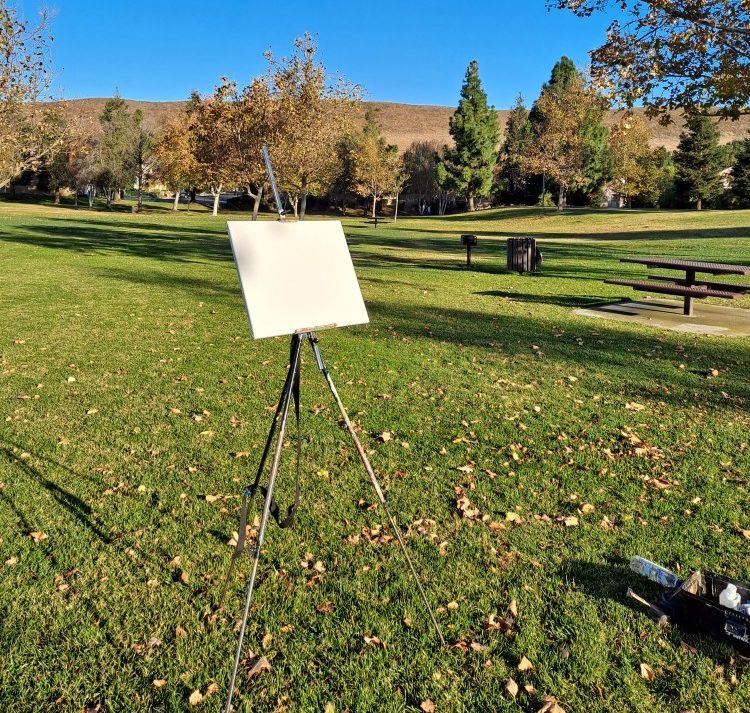Plein air painting has its roots in the mid-19th century, primarily associated with the Barbizon school and later adopted and transformed by the Impressionist movement. Artists from these schools ventured outdoors, leaving the confines of their studios to immerse themselves in the natural world. They sought to break free from the constraints of academic art, which had long emphasized rigid representation, and instead embraced the spontaneity of outdoor painting. more
The Essence of Plein Air Painting
At its essence, plein air painting is about capturing the fleeting and ephemeral qualities of the world around us. It’s a celebration of outdoor scenery, where the artist becomes an active participant in the landscape. The Impressionists, led by luminaries like Claude Monet, sought to paint the effects of light and color as they played across the landscape. This emphasis on the ever-changing visual experience was groundbreaking and led to a profound shift in the art world.
Abstract Aesthetic: Beyond Realism
One of the hallmarks of plein air painting is its embrace of the abstract aesthetic. While realism certainly has its place, plein air artists often explore non-representational elements in their work. This departure from strict representation allows for a more profound connection between the viewer and the artwork. The viewer is invited to interpret the scene through their own emotional and imaginative lens, making each piece a deeply personal experience.
In the pursuit of the abstract, plein air artists employ a range of techniques. Expressive brushstrokes, for instance, convey the artist’s emotional response to the landscape. These strokes may be bold and vigorous to convey energy or soft and delicate to evoke serenity. This freedom of expression, combined with the immediacy of outdoor painting, results in works that are charged with emotion and vitality.
Visual Elements: The Language of Nature
To fully appreciate the complexities of plein air abstractions, it’s essential to explore the visual elements at play. Nature becomes a living laboratory for the artist. The interplay of natural light and shadow creates a dynamic visual experience. The harmony of colors in the landscape, influenced by the time of day and the season, presents endless opportunities for exploration.
Composition in plein air painting is often intuitive. Artists may use the natural surroundings to guide their choices, arranging elements in a way that captures the essence of the scene. The shapes and forms found in the landscape are essential tools for conveying depth and perspective.
Flatness, a term often associated with abstract art, takes on new meaning in plein air abstractions. While the natural world is anything but flat, plein air artists use their skills to create a sense of surface dimension on a two-dimensional canvas. This manipulation of flatness allows them to emphasize certain elements, leading the viewer’s eye and creating a sense of movement within the composition.
The Artist’s Unique Perspective
Plein air artists are not merely replicating what they see; they are interpreting it. This interpretation is deeply personal and is influenced by the artist’s own experiences, emotions, and artistic vision. It’s a fusion of the real and the abstract, where the artist’s unique perspective transforms a scene into a work of art.
The Plein Air Studio: Nature as the Ultimate Muse
The studio for a plein air artist is not a room with four walls and a roof, but rather the boundless expanse of the natural world. Nature herself becomes the ultimate muse, offering an ever-changing tableau of inspiration. Artists venture into forests, meadows, along coastlines, and into urban landscapes to capture the beauty and vibrancy of the world around them.
The portable easel, a trusted companion of plein air artists, allows them to set up quickly and work efficiently. It’s a testament to the adaptability and resourcefulness of these artists, who must contend with shifting light, changing weather, and the passage of time.
A Continuing Legacy: Plein Air Abstractions in the Modern Age
As we journey through the world of plein air abstractions, it’s important to recognize that this artistic movement is not confined to history books. It continues to inspire contemporary artists who seek to push the boundaries of artistic expression. The legacy of plein air painting is evident in the works of modern-day creators who draw upon its principles while infusing their own unique perspectives.
In conclusion, plein air abstractions represent a fusion of artistic expression and the natural world. It’s a celebration of the abstract aesthetic, where artists transcend the boundaries of strict realism to create works that are emotionally charged and deeply personal. Whether you are an artist seeking to connect with nature or an art enthusiast looking to experience the magic of plein air painting, this journey promises a profound appreciation for the beauty that surrounds us and the limitless possibilities of artistic expression. more
